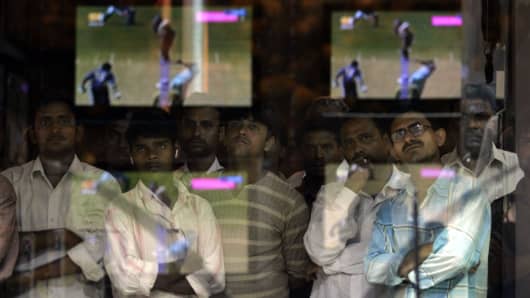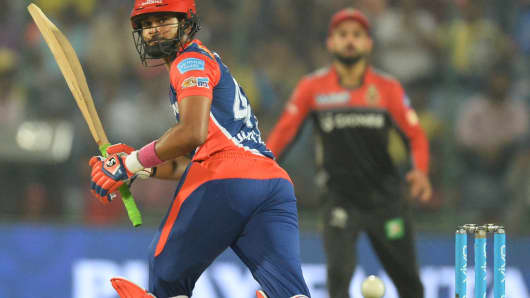A Godzilla sport
No cricket property — whether it’s broadcast rights, tournament sponsorships or brand endorsement contracts — has ever seen a jump of less than five to eight times on renewal, say marketing experts.
For example, Facebook made a $600 million bid for the 2018-2022 digital rights of the IPL, compared with the $45 million the rights were sold for less than three years ago. But Facebook still lost out, as Star won both the digital and TV rights in a consolidated bid.
The CEO of 21st Century Fox unit Star India, Uday Shankar, said that he wants to make “cricket even bigger than it [already] is.”
Money may corrupt, but cricket thrives
Cricket in general and the IPL in particular have had more than their share of controversies — a massive match-fixing scandal, allegations of nepotism and corruption. The Board of Control for Cricket in India (BCCI) that manages the sport has been pulled up by the country’s highest court for mismanagement.
Yet any dent that’s been made to its credibility has yet to affect its financial health.
“The BCCI’s revenues are very well protected, it has a fantastic product in the IPL and makes $600 million a year from that alone,” said Mathur, who has been a Board official.
“We have seen that money corrupts. But we have to accept that cricket is the most popular sport,” former Indian cricketer Kirti Azad said.
The game is much bigger than the controversies that surround it. That much was evident when match-fixing scandals prompted Pepsi to withdraw its title sponsorship of the IPL in 2015. The BCCI found another sponsor within days.
Chinese phone manufacturer Vivo stepped in, and it recently renewed its contract at an increase of 554 percent over the previous deal, according to the BCCI. Following the new agreement — which cost the company about $340 million — the tournament will be called Vivo IPL until 2022.
Everyone associated with cricket can feel its Midas touch. Top IPL teams attract 20 – 25 sponsors, making an upwards of $5-7 million a year, and cricket commentators can attract contracts of more than $750,000 for a 6-month season excluding the IPL, people associated with the business of cricket told CNBC.
“Since India won the World Cup in 1983, cricket has become this huge giant. It’s amazing how the BCCI has been able to market cricket,” said Tuhin Mishra, managing director of Baseline Ventures, the company that takes care of the commercial interests of several athletes.
Among them is PV Sindhu, India’s number one badminton player, who recently broke the glass ceiling by becoming the second highest paid sports celebrity for endorsements in India. She demands $225,000 a day as an endorsement fee — much higher than many cricketers, but well short of the $500,000 that Indian cricket captain Virat Kohli commands, Mishra said.
Unmatched fan following
Kohli, has an estimated 35 million followers on Facebook and made $22 million in the year ended June 1, 2017, according to Forbes. Some insiders believe that’s a conservative estimate. His popularity together with that of other cricketers can at least partly be chalked up to the fact that India is a top team among the 10 or so nations that play the sport regularly.
“Cricket attracts between 30,000 and 60,000 people to the stadiums, especially for the shorter format of the game,” said Mishra, who noted that number is typically “seen only in political rallies.”
The advertisers that are set to help Star India recover the $2.55 billion it paid for the IPL rights are banking on the sport’s stupendous reach. The 2017 edition of the IPL which ended in May was watched by approximately 180 million people on television, according to media sources.
“Advertisers will be willing to pay a premium, given that the IPL is an impact property,” said Nandini Dias, India CEO at media buying agency Lodestar UM. “But if Star is going to depend only on advertising to recover the cost, they are being too ambitious. They will have to look at other avenues, like selling content and subscriptions.”
The economy in India is showing signs of slowing in the near term — its growth hit a three-year low in the quarter ended June. Advertising may take a hit generally, but a slowdown is very unlikely to disrupt cricket.
“Investing in cricket is a no-brainer. All the matches of the IPL in 2017 were completely sold out,” Mathur said. “Don’t see a problem next year.”





